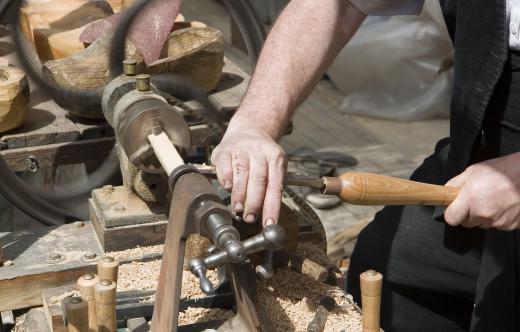As you attempt to choose the best large lathe, focus your attention on three major lathe components: the frame or chassis of the machine, the motor of the machine and the various controls or features of the large lathe. Once the three areas have been compared and contrasted for ease of operation, strength and potential machining operation, you can decide on the best large lathe for your particular needs and budget. You might also want to examine the power requirements of each potential lathe to determine if the machine is compatible with the available power offered in your area.
Buying a large lathe can be confusing unless you make a list of areas to examine closely. One of the many areas of the machine that you will need to examine is the frame or chassis. The best frames will allow the large lathe to sit low enough to the ground to allow you to reach all of the machine's controls with ease. It is very dangerous to reach over a running lathe in order to manipulate controls on the opposite side of a machine. In order to complete this task safely, the large lathe should be easily accessible and allow you to reach all controls without coming in close contact with a spinning lathe chuck or other moving components.

It is best to only choose from lathes that have smooth-running and quiet motors. You should only consider the lathes that the seller offers to let you hear run. This will allow you to listen to the sounds of the motor and eliminate any potential lathe purchases of machines with noisy, loud or rough running motors. These motor problems could be a sign of a serious and often expensive problem on the horizon. A smooth-running and quiet motor indicates a well-maintained lathe, in most instances.
When attempting to buy the best lathe, you should focus your attention on only those machines that offer multiple machining options. Automatic control options are preferred by many lathe operators, as these allow you to machine multiple components of the same dimension practically hands-free. The better lathes will offer not only automatic in and out feed, they will also have automatic taper, threading and knurling controls. By choosing from only the lathes with these particular options, you can be certain that you will have chosen the best large lathe available to you at the time.
